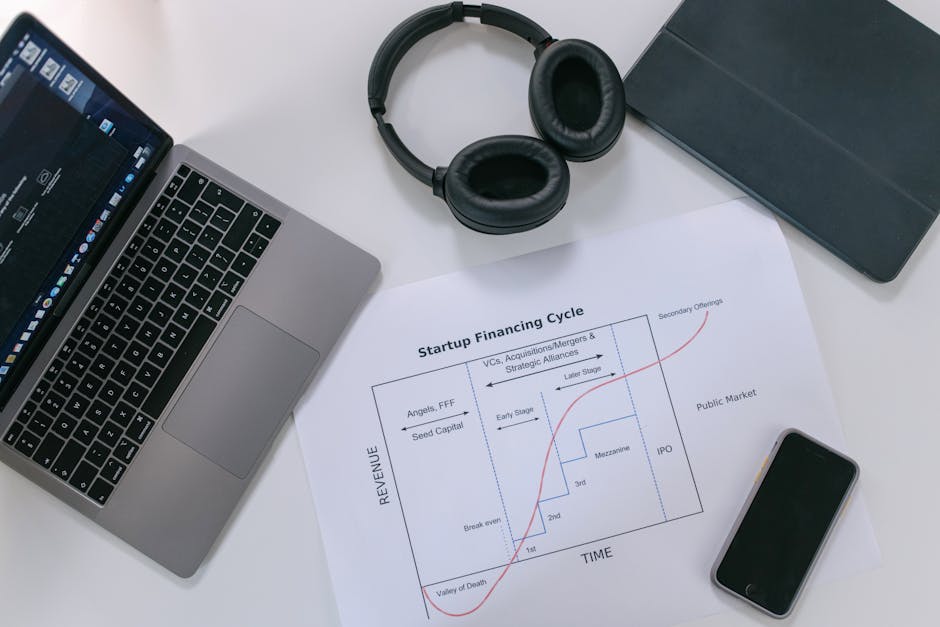Expert MVP Developers: Your Agile Project FAQs
You’re ready to innovate with MVP development, but you need answers.
Dive into the world of agile project FAQs with expert MVP developers.
Get ready to streamline your process and unleash your project’s full potential.
Key Takeaways
- MVP development focuses on identifying and prioritising critical features that deliver maximum value to users.
- Agile methodology benefits MVP projects by allowing rapid adaptation and delivering a functional product sooner.
- Efficient feedback loops in agile methodology continuously gather and incorporate valuable insights for product refinement.
- Understanding the roles of MVP developers, product owners, and scrum masters is essential for successful Agile projects.
Understanding MVP Development

If you’re new to MVP development, it’s crucial to understand the basic principles and goals of Minimum Viable Product (MVP) development. MVP prioritisation is at the core of this methodology. It involves identifying and focussing on the most critical features that deliver the maximum value to the users.
By embracing Lean start-up concepts, MVP development aims to efficiently allocate resources, minimise waste, and rapidly iterate based on user feedback. This approach alines with the mindset of innovation seekers like yourself, as it enables quick validation of ideas and the ability to pivot based on market demands.
Understanding MVP prioritisation and Lean start-up concepts is essential for those seeking innovative solutions. By prioritising features that provide the most value and embracing a lean approach, you can swiftly test your ideas in the market and adapt based on real-world feedback.
Transitioning into the subsequent section about ‘agile methodology for MVP projects’, it’s vital to recognise how these principles seamlessly integrate into the agile framework, promoting adaptability and continuous improvement.
Agile Methodology for MVP Projects

So, you’re ready to explore how Agile methodology can benefit your MVP project.
Rapid iteration for MVPs means you can quickly adapt to changes and deliver a functional product sooner.
Efficient feedback loops and an iterative development process help ensure that your MVP meets the evolving needs of your users.
Rapid Iteration for MVPs
As an expert MVP developer, you implement rapid iteration in MVP projects using agile methodology to quickly deliver value to stakeholders.
Rapid prototyping allows you to swiftly create and test early stage MVP versions, gathering valuable feedback to refine and improve the product.
This iterative approach enables you to make continuous improvements based on user testing, ensuring that the MVP alines with user needs and expectations.
By embracing agile principles, you can adapt to changing requirements and market demands, delivering incremental updates that add significant value with each iteration.
This iterative process fosters innovation, allowing you to respond to feedback and incorporate new ideas efficiently, ultimately leading to the development of a robust and user-centric MVP.
Efficient Feedback Loops
Implementing efficient feedback loops is crucial in agile methodology for MVP projects, allowing you to continuously gather and incorporate valuable insights for product refinement. By establishing efficient feedback loops, you can ensure that your MVP evolves in line with user needs and market demands. This fosters a culture of continuous improvement, where each iteration builds upon the last, driving the product towards optimal functionality and user satisfaction. To illustrate the importance of efficient feedback loops, consider the following comparison:
| Traditional Development | Agile Development |
|---|---|
| Lengthy feedback cycles | Short feedback cycles |
| Limited user involvement | Continuous user involvement |
| Static product development | Dynamic product evolution |
Embracing efficient feedback loops in agile MVP development enables rapid adaptation and empowers you to deliver a product that resonates with your target audience.
Iterative Development Process
To continuously refine your MVP in an agile methodology, you iteratively develop the product based on frequent user feedback and market insights. This approach allows for continuous improvement, adaptive planning, incremental delivery, and flexible response.
In an iterative development process, you can adapt to changing requirements and incorporate new features or modifications based on the evolving needs of your users. By breaking down the development into smaller, manageable increments, you can ensure that each iteration adds significant value to the product.
This iterative approach fosters a dynamic and responsive development environment, enabling you to make timely adjustments and enhancements. Embracing iterative development empowers you to stay ahead of the curve, delivering a product that alines closely with user expectations and market demands.
Key Principles of Agile Development

You should adhere to the key principles of agile development to ensure successful project outcomes.
Agile development emphasises flexibility, collaboration, and customer feedback to deliver high-quality products efficiently. In agile project management, it’s crucial to prioritise customer satisfaction through continuous delivery of valuable software.
This means embracing change, welcoming customer input, and making adjustments as necessary throughout the development process. Transparency and open communication are also fundamental in agile development, enabling teams to work closely with stakeholders and respond effectively to evolving requirements.
By promoting self-organising teams and empowering individuals, agile methodologies foster a more dynamic and innovative approach to project delivery.
Transitioning into the subsequent section about ‘MVP development team roles’, understanding the key principles of agile development will provide a solid foundation for implementing MVP strategies.
This understanding will be crucial in structuring teams and processes to effectively deliver minimal viable products that meet customer needs and drive business value.
MVP Development Team Roles

As an expert MVP developer, understanding the essential roles within the MVP development team is crucial for effectively delivering high-quality minimal viable products. It’s essential to have a clear understanding of MVP developer responsibilities and team communication dynamics to ensure the success of your Agile project.
Here are three key roles within the MVP development team that play a critical part in shaping the product:
-
MVP Developer: Responsible for writing clean, efficient code and implementing the technical aspects of the product. They play a crucial role in ensuring that the MVP is developed with scalability and future iterations in mind.
-
Product Owner: Acts as the bridge between the development team and stakeholders, defining the product vision, prioritising features, and ensuring the team is building the right product. Their role is vital in maintaining a clear direction and focus for the MVP.
-
Scrum Master: Facilitates effective Agile practises within the team, removes any impediments to progress, and fosters a collaborative and self-organising environment. The Scrum Master plays a key role in optimising team communication dynamics and ensuring the Agile process runs smoothly.
Agile Project Management Tools

So, you’re ready to talk about Agile Project Management Tools.
Let’s explore the best tools available,
their features for team collaboration,
and how they integrate with the development process.
These points will help you understand how to effectively manage your agile projects using the right tools.
Best Agile Management Tools
When selecting the best agile management tools for your project, consider their compatibility with your team’s workflow and the scope of your project. Look for tools that facilitate agile project planning and sprint tracking to ensure seamless project execution.
Here are three innovative agile management tools to consider:
-
Jira: A versatile tool that supports agile project management, offering features for backlog prioritisation, sprint planning, and real-time visual reporting.
-
Asana: Known for its user-friendly interface and flexibility, Asana enables teams to plan, organise, and track work in a collaborative manner, making it suitable for agile projects of varying scales.
-
Trello: With its customisable boards and intuitive interface, Trello is ideal for managing agile projects, allowing teams to organise tasks, track progress, and adapt to changing project requirements.
Transitioning into the subsequent section about ‘features for team collaboration’, these agile management tools also integrate collaborative features to enhance team productivity and communication.
Features for Team Collaboration
Maximise your team’s productivity and communication by leveraging the collaborative features integrated into agile management tools.
Team communication is essential in agile project management, and the right collaboration tools can make all the difference. Look for platforms that offer real-time messaging, file sharing, and task assignment functionalities.
These features enable seamless communication and ensure that everyone is on the same page, fostering a cohesive and efficient team environment.
Additionally, agile management tools with built-in collaboration capabilities allow for easy sharing of progress updates, feedback, and ideas, promoting a culture of transparency and innovation.
Integration With Development Process
To seamlessly integrate with your development process, agile project management tools should offer robust features for tracking and adapting to changes in your project. When considering integration with development processes, look for the following key features:
-
Incremental Improvements: Ensure the tool supports incremental improvements and allows for gradual enhancements to the project without disrupting the workflow.
-
Continuous Integration: Look for seamless workflow and development synchronisation capabilities to support continuous integration, helping your team to integrate code changes frequently and detect issues early.
-
Adaptability: The tool should be adaptable to changes, allowing for real-time adjustments and providing visibility into the impact of changes on the overall project.
These features will ensure that your agile project management tool alines with your development process, promoting innovation and efficiency.
Best Practises for MVP Development

As an MVP developer, your primary focus should be on delivering a functional product with minimal features, emphasising the core value proposition. MVP development is about quickly launching a product to gather user feedback and iterate based on it. Embracing this approach allows for rapid product evolution, ensuring that the final product meets the needs of the target audience.
One of the best practises for MVP development is to prioritise features based on user feedback. This means that you should gather insights from early adopters and use that data to drive the product’s evolution. By focussing on the essential features that resonate with users, you can ensure that the product alines with market demands.
Additionally, it’s crucial to maintain a lean mindset throughout the MVP development process. Avoid the temptation to add non-essential features that can delay the product launch. Instead, concentrate on delivering a streamlined product that addresses a specific need or solves a particular problem for the users.
Frequently Asked Questions
How Can I Effectively Communicate With My MVP Development Team if We Are Working in Different Time Zones?
To effectively collaborate with your MVP development team in different time zones, use remote team communication tools like Slack or Zoom for real-time discussions. Schedule regular video meetings to ensure clear and open communication.
What Are Some Common Challenges That MVP Development Teams Face, and How Can They Be Overcome?
When overcoming challenges, agile teams communicate openly, alining business goals. Picture a puzzle, each piece vital to the bigger picture. Embrace innovation, collaborate, and conquer obstacles together. That’s the key to success.
How Do You Ensure That the MVP Development Process Is Alined With the Overall Business Goals and Objectives?
To ensure your MVP development process alines with business goals, communicate project objectives clearly. Encourage cross-functional collaboration and feedback. Regularly assess progress against business metrics. Emphasise adaptability to pivot as needed for innovation and business alinement.
What Are Some Key Considerations for Scaling an MVP Project Once It Has Proven Successful?
When scaling your successful MVP project, be mindful of challenges like maintaining agility and sustaining the rapid iteration cycle. Embrace the need for innovation and adaptability to ensure continued success as you expand.
How Can We Measure the Success and Impact of Our MVP Development Efforts?
To measure the impact of your MVP development, analyse user feedback to understand how it alines with your goals. Utilise metrics like user engagement, adoption rates, and customer satisfaction to gauge success and make informed decisions for innovation.
Conclusion
So, you’ve got your MVP development team in place and you’re ready to start your agile project. Remember, it’s all about creating a minimum viable product that meets the needs of your users.
Keep things lean and mean, and don’t try to reinvent the wheel. Stick to the agile principles, and you’ll be on the fast track to success.
Let’s make it happen!
Contact us to discuss our services now!
